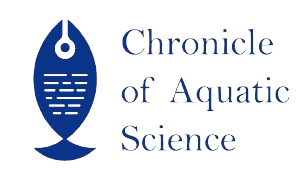| File | Action |
|---|---|
| CoAS_V1IS3_06 | Download |
- 919088951040 call us
- chronicleofaquaticscience@gmail.com Mail us
CoAS_V1IS3_06
Popular Article
Cold water Aquaculture and its Nutritional Benefits
Inain Jaies* and Feroz A. Shah
Abstract
Cold water aquaculture, the practice of cultivating aquatic organisms in environments characterized by lower water temperatures, has gained prominence as a viable solution to meet the increasing global demand. This article explores the nutritional benefits associated with cold water aquaculture products, focusing on the unique qualities of species such as salmon and trout, which thrive in these conditions. The nutritional attributes of cold water aquaculture products extend beyond taste and texture, encompassing essential nutrients such as omega-3 fatty acids, high-quality protein, and micronutrients. These products contribute significantly to human health, particularly in terms of cardiovascular well-being, brain development, and immune function. The environmentally conscious practices often employed in cold water aquaculture further enhance its appeal as a sustainable source of nutrientrich food.
Keywords
Cold water, Omega-3, protein, Aquaculture, Health.
References
Boyd, C. E. (2018). Water temperature in aquaculture. Global Seafood Alliance. https://www.globalseafood.org/advoca te/water-temperature-in-aquaculture/.
Church, D. D., Hirsch, K. R., Park, S., Kim, I. Y., Gwin, J. A., Pasiakos, S. M., ... &Ferrando, A. A. (2020). Essential amino acids and protein synthesis: insights into maximizing the muscle and whole-body response to feeding. Nutrients, 12(12), 3717.
Diana, J. S. (2009). Aquaculture production and biodiversity conservation. Bioscience, 59(1), 27- 38.
Erbay, E. A., & Yesilsu, A. F. (2021). Fish protein and its derivatives: functionality, biotechnology and health effects. Aquat. Food Stud, 1.
Gammone, M. A., Riccioni, G., Parrinello, G., & D’orazio, N. (2019). Omega-3 polyunsaturated fatty acids: Benefits and endpoints in sport. Nutrients, 11(1), 46.
Lindholm‐Lehto, P. (2023). Water quality monitoring in recirculating aquaculture systems. Aquaculture, Fish and Fisheries, 3(2), 113-131.
Mugwanya, M., Dawood, M. A., Kimera, F., &Sewilam, H. (2022). Anthropogenic temperature fluctuations and their effect on aquaculture: A comprehensive review. Aquaculture and Fisheries, 7(3), 223-243.
Querques, G., Forte, R., &Souied, E. H. (2011). Retina and omega-3. Journal of nutrition and metabolism, 2011.
Singh, S. P., Sharma, J. G., Ahmad, T., & Chakrabarti, R. (2013). Effect of water temperature on the physiological responses of Asian catfish Clarias batrachus (Linnaeus 1758). Asian Fisheries Science, 26(1), 26-38.
Yu, S. E., Dong, S. L., Zhang, Z. X., Zhang, Y. Y., Sarà, G., Wang, J., & Dong, Y. W. (2022). Mapping the potential for offshore aquaculture of salmonids in the Yellow Sea. Marine Life Science & Technology, 4(3), 329-342.
- Published online
- 31st August, 2023
How to Cite the Article
Jaies, I., and Shah, F. A. (2023). Cold water Aquaculture and its Nutritional Benefits. Chronicle of Aquatic Science 1(3): 37-41
Copyright
This is an open-access article distributed under the terms of the Creative Commons Attribution License (CC BY). The use, distribution or reproduction in other forums is permitted, provided the original author(s) and the copyright owner(s) are credited and that the original publication in this journal is cited, in accordance with accepted academic practice. No use, distribution or reproduction is permitted which does not comply with these terms.

CoAS_V1IS3_06


